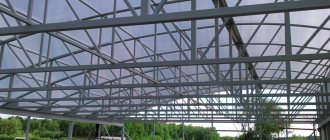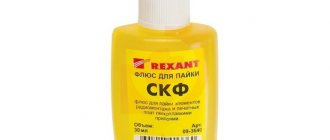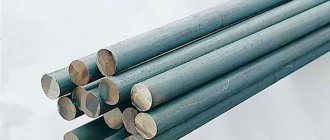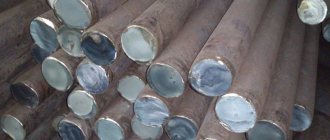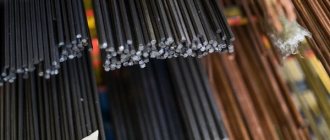DIY liquid granite at home
An alternative to cement has appeared on the construction market, which from the point of view of environmental friendliness of production is not safe for the atmosphere. Every year, about 2 billion tons of cement are produced worldwide, with each ton releasing 0.4 tons of carbon dioxide into the atmosphere. Engineers worked hard on this problem for a long time until they invented liquid granite - a new word in the technology of producing finishing materials. It has many advantages compared to other finishing materials: fire resistance, versatility, quality, safety, strength.
Stone countertop repair
No matter how carefully you use such a countertop, over time microscopic chips, cracks and other damage will appear on it. Repairing artificial stone surfaces is not difficult, which will restore the original appearance of the kitchen surface.
To eliminate large chips and cracks, it is necessary to degrease the damaged area, slightly widen the crack and fill it with two-component glue. After the glue has hardened, the surface is sanded and manually polished.
If it is necessary to eliminate blisters and stains, the defective area is cut out using a milling cutter, after which a patch is poured from the remaining liquid material. All that remains is to wait for the material to harden, polish and grind the repaired countertop.
Types and properties of material
In appearance, such a composite material is practically indistinguishable from natural mineral. The artificial origin of a stone can be determined by tactile sensations. This polymer has a perfectly smooth, even surface. This material is warm and pleasant to the touch, which allows it to be used for the manufacture of various floor coverings.
Liquid artificial stone has a dense structure that is resistant to external factors, significant temperature changes and ultraviolet radiation. The surface does not absorb dirt, which greatly simplifies the maintenance of countertops or facing floor tiles.
Currently, there are many varieties that differ in their polymer binder compositions, as well as the fillers used. Most often, acrylic or translucent polyurethane adhesive is used to make the material. The filler used must have a dense structure with good adhesion, which simultaneously ensures strength with an interesting and attractive appearance.
Depending on the fillers used, such artificial stone is usually divided into the following types:
- quartz;
- marble;
- acrylic;
- granite.
Each specific variety is selected depending on the required color and type of coating, as well as the required performance characteristics. Polymers that use a polyurethane base and granite backfill are the most durable. Varieties that use marble or quartz as fillers have an original and unusual appearance.
Monumental molding
Artificial boulders, blocks or flagstones are created on a blank covered with reinforcing mesh from a concrete mixture. First of all, using a minimal amount of water, prepare a “dry” solution without the participation of pigment. Then this composition is applied to the model in the manner of appliqué. The result is a base, which, after setting, is covered with the main working composition (already of normal consistency and with pigment) and stretched to the desired shape. Products should dry in the fresh air, protected from rain. And at least 40 days.
( 68 votes, average: 5.00 out of 5)
How to choose plastic windows: expert advice
Which parquet varnish to choose and how to use it
Related Posts
Window sill with sprayed surface
A composite composition of liquid stone is poured into a pre-made mold, the workpiece is placed on it and evenly pressed down with a load. The workpiece is perforated in several places so that excess solution can escape.
After the bottom layer has completely hardened, the load is removed from the workpiece, and another, final layer of solution is poured on top. Leave the workpiece until completely hardened, then remove the finished product from the mold. For final processing, the product is milled, ground and polished.
It seems that if you follow all the instructions, making liquid stone yourself is not at all difficult. But there is no need to rush to conclusions. The problem is that there is no optimal composition for this composite material. Manufacturers modify the composition of the mixture, and the technological process changes accordingly.
Useful tips for working with liquid stone
Usually, the production of artificial stone is considered as an opportunity to organize your own business. There is no need to rush in this case. It is better to postpone the purchase of materials and equipment until several technologies have been studied, the sales market has been analyzed, and possible failures have been eliminated.
Forms
The following types of forms are used to produce artificial stone:
- Disposable clay ones, which are smelted on a wax model and used for artistic casting and sculpting.
- Polyurethane reusable industrial production.
- Homemade silicone ones for home creativity and piece production, withstanding up to several dozen castings.
You can also make silicone molds for making artificial stone yourself. To do this, you will need a model or a model set (the same one made of clay), which will need to be laid out on a working board covered with plastic film. Next, the display is surrounded by a side (wooden or plastic), which is 10-20 cm higher than the model tops. Everything, including the sides and the models themselves, will need to be pre-lubricated with grease (solidol, shachtol or cyatim). Then the shield is set strictly horizontally in level so that the upper silicone surface also turns out to be perfectly horizontal - after all, it will become the bottom of the future form.
The next step is pouring acidic silicone (the cheapest, which smells strongly of vinegar). The substance on the model is squeezed out of the tube - in a spiral, from the center to the edges. Until the display is completely filled, up to the sides. And to prevent bubbles from forming inside, the silicone should be dispersed into shape with a flute brush dipped in a foaming solution of any dishwashing detergent.
Important: You cannot use ordinary soap solution for overclocking, as it gives an alkaline reaction that can ruin the silicone.
Forms filled in according to all the rules are sent for drying under the same conditions as clay models. Only in this case there is no need to use infrared illumination - the shape will turn out with bubbles. Only ventilation can speed up drying. But the classic drying time for silicone is 2 mm per day, and it is better not to speed it up. A silicone ring filled in at the same time and sent for drying along with the molds will help control the process.
Manufacturing methods
The “artificial stone” technology has two methods for manufacturing products - direct and reverse.
The direct method is that the filler is applied to a pre-prepared piece of chipboard or plywood. Immediately after the filler has hardened, the surface of the product is ground and polished. The disadvantages of this method are the high consumption of materials and the manufacturing time.
We practice the reverse method. In this case, less effort is applied to processing (grinding) the finished product.
Reverse method. The production of liquid stone using the reverse method is carried out as follows: two blanks are cut out of an MDF sheet, which are exact copies of the tabletop. The parts are glued together, and if necessary, cutouts are made for the sink or hob.
- —>
- —>
- —>
- —>
- —>
- —>
- —>
- —>
- —>
The finished part is transferred to the work table. On the work table, the parts are covered around the perimeter and in the cutout area under the hob with pre-prepared strips of chipboard, plywood or plastic. The strips are placed on the edge and fixed with hot glue. Next, mark the location of the sink with a pencil on the desktop.
After this, the workpiece is removed from the resulting formwork (mold). Subsequently, the workpiece is cut 5 mm on each side and milled in the areas of the future edge.
Using the marks made with a pencil, the shell matrix is established. The gap between the matrix and the work table is covered with plasticine.
- —>
- —>
- —>
- —>
- —>
- —>
Plasticine is laid out along the end where there will be a decorative edge. Using a template that follows the contours of the cutter, the plasticine is given the required shape. Then the entire surface of the formwork and matrix (shell) is treated with a release agent - wax. After 15-20 minutes the mold is ready for filling.
- —>
- —>
- —>
SkillStone filler and gelcoat is prepared according to the following proportions: SkillStone - 40%, gelcoat - 60%. After introducing the hardener (1-1.5%), the finished mixture is evenly sprayed onto the mold. Consumption is approximately 4 kg. per 1 sq.m. The applied material should harden (polymerize) within 30-45 minutes.
- —>
- —>
- —>
The hardened form is reinforced with fiberglass. After this, the pre-prepared soil (resin with the addition of calcite) is poured out and evenly distributed over the entire area of the workpiece. The primer is painted with pigment pastes in the color of the SkillStone .
- —>
- —>
- —>
- —>
- —>
A previously prepared piece of MDF or chipboard is placed into the mold filled with soil. Loads are distributed from above over the entire surface plane of the product to remove excess soil and air. After 1-1.5 hours, the weights are removed, and the surface is cleaned and refilled with soil.
- —>
- —>
- —>
- —>
- —>
- —>
- —>
- —>
- —>
After complete polymerization, the finished product is removed from the work table and processed: grinded, milled, polished.
- —>
- —>
- —>
- —>
- —>
- —>
Liquid stone has a fairly wide range of colors: today there are about two hundred standard colors. But if you don’t find the right color among this variety, artificial stone production technology allows you to create a shade to suit every taste.
The technology for producing liquid stone has some subtleties and nuances. We are always ready to provide maximum information on all issues of interest, which will help you make artificial stone with your own hands .
Vibration stand
A vibration stand is a design that ensures the hardening of artificial stone with the required homogeneity of the mixture for its production. You can even make such a stand yourself.
Any low-power electric motors are used as vibrators (the total should be approximately 30-50 W per sq. m). There should be at least 2 of these motors at the corners of the platform, and ideally - 4. If you have to use only one motor, it is better to place it in the center of the installation platform, and then the trays with forms should be installed at the edges.
To regulate the strength of vibration, the motors are powered through a rheostat or thyristor regulator.
Eccentrics are mounted on the motor shafts - you can use point eccentrics, or you can use U-shaped pieces of rod or strips tightened with screws. The rotation speed of the motors should be 600-3000 rpm. If it is less, the mixture will separate, and if it is more, the required vibration force will not be obtained.
The platform is made of dense but layered material (thickness 8-20 mm). Plywood, getinaks or fiberglass are suitable. Layering is the most important factor when choosing, since mechanical vibrations along the platform should propagate quite freely along the platform horizontally and quickly attenuate vertically.
Pallets with the working composition are secured to the platform using self-tapping screws.
As for the springs on which the platform vibrates, they must be equally rigid. Loaded, under the weight of the platform, such springs should compress no more than a fifth of their length. They must be linear (cylindrical, made of wire of uniform cross-section) and wide. The installation step is 300-600 mm both along the length of the platform and its width. That is, there should be 9 such springs on each square meter of the platform. In the platform and base of the stand, special holes or annular grooves are made under the ends of the springs so that the platform does not slip during operation.
In this case, the dampers of parasitic overtones are pads made of foam rubber blocks in contact with the springs. Under the weight of the empty platform, such blocks should be compressed by a third.
It is better to make the base of the stand wooden - it will also dampen the overtones, while the metal base will also begin to ring them.
The vibration stand is mounted on a rigid support with adjusting screws, which allow the platform to be leveled strictly horizontally.
How to care for a product made of liquid stone?
Caring for furniture made from liquid stone is easy. To ensure that the surface looks beautiful for as long as possible and does not deteriorate, you must follow the following rules:
- Do not cut food directly on the countertop. The material is very hard, but over time this will lead to scuffs and chips. It is not difficult to repair them; just use a grinder and polish the coating. However, performance and appearance will no longer be the same.
- It is prohibited to place containers with boiling water, plates, frying pans and other utensils with hot contents without a stand on the liquid stone surface. You should not pour boiling water into such a sink. Liquid stone does not withstand very high and low temperatures; the permissible range is from -50° to +80°.
- A soft cloth or sponge is suitable for cleaning such a surface. The main thing is that it is without an abrasive coating. Do not use metal scourers. Do not wash the coating with products containing drying oil or silicone. A regular soap solution is suitable for daily care.
- Sinks, bathtubs, and swimming pools can be cleaned using chlorine-containing products. For glossy surfaces it is preferable to use liquid products, and for matte surfaces it is preferable to use gel products. Do not use dry powders - they can scratch the coating.
- If the surface has lost its shine, it can be restored using polishing pastes. They will also restore the brightness of the colors.
Artificial stone is an excellent alternative to natural materials. It will fit into any interior and will last a long time.
Stand adjustment
To adjust the vibration stand, you must:
- load it completely (place a pallet with filled forms and secure it);
- for weight, also put models in the molds;
- Use a bubble level to level the horizontal position of the base and the platform on it;
- set the adjusting screws to this very horizontal position;
- place a saucer with a ball from a bearing (diameter 5-6 mm) directly on the molds;
- turn down the vibrator regulator;
- turn on vibrators;
- smoothly add power, making the ball bounce on the saucer;
- then gradually reduce the power so that the ball rolls on the saucer again, ringing.
After the above manipulations, the vibration stand can be considered adjusted.
Liquid stone WITH YOUR HANDS
Currently, products made from liquid stone are extremely popular. The material, which has unique properties, is used to make kitchen countertops, window sills, sinks and many other products.
Liquid stone products are in stable demand on the market. This probably primarily explains the high price of the products. Although the cost of the same countertop made of liquid stone is several times less than its retail price.
If you follow all the rules and regulations, setting up the production of the same countertops at home is not such a difficult task. I think this is a good idea for developing your own business.
The technology for making products from acrylic resin is in many ways similar to that invented by home cooks back in the 70s and 80s of the last century. True, for this they used the most accessible material at that time - epoxy resin.
Having available white sand, chalk, diabase black flour, and white marble chips as a filler, products were obtained that resembled marble in appearance. By adding various non-aqueous dyes, we sometimes obtained a very beautiful surface. The consumption of dyes was selected experimentally.
The mixture consisted of 80% filler, 18% binders and 2% dye. To prepare the mixture, a diluent was added to the resin and mixed thoroughly, then a hardener was added and mixed again. After this, the mixture was heated in a “water bath” to approximately 50 degrees, filler was added, mixed thoroughly, then dye was added and mixed again. Next, the mixture was poured into the mold.
The form was prepared as follows. They took a sheet of glass and carefully wiped it with a cloth moistened with acetone, and then with a dry cloth. Wax mastic was applied and after 20 minutes polished with a dry cloth. The surface quality of the resulting product subsequently depended on how thoroughly the glass was pre-treated.
For the sides, polished aluminum corners were used, on the inner surfaces of which a thin layer of a mixture of paraffin and turpentine was applied. The mixture was pre-prepared in a “water bath” by melting paraffin in turpentine, and then cooled to room temperature. The sides were attached to the glass using putty.
What is acrylic
The word "acrylic" briefly refers to polymers of methacrylic and acrylic acid. This is synthetic fiber, plastic, plexiglass, i.e. everything that is made on the basis of these compounds.
If acrylic resins are mixed with stone chips and dyes, poured into a mold and allowed to harden, you get a product called artificial stone.
Types of artificial acrylic stone
Artificial mineral is divided into types according to the number and type of resins included in the composition and determining its properties. Acrylic is one of the most popular varieties. It can be roughly divided into:
- color scheme (pastel, beige, gray, black, pinkish, white, etc.);
- thickness (3, 6, 9, 12, 20, 25, 30, 60 mm);
- surface gloss (matte, glossy, semi-glossy).
Watch a video about what acrylic stone is:
Where to buy ready-made artificial stone?
Nowadays you can buy decorative stone in almost any large hardware store. Hypermarkets such as OBI, Leroy Merlin, Maxidom offer a wide range of artificial tiles. The cost for different types varies, but generally ranges from 600 rubles per 1 square meter. After calculating how much gypsum or cement is needed to make that amount of stone, the advantage of making the stone yourself becomes obvious. Especially if you need to decorate large areas with tiles for tiling, when you need a huge footage of tiles. Of course, if you are finishing only a few square meters, then it is more profitable to buy artificial stone than to purchase forms.
How to achieve the desired color
Pigments for artificial stone
To give artificial stone a beautiful look, you can first paint it. How to do it? Special pigments are used for coloring. For example, they can be applied to the mold immediately before pouring the solution into them. In this case, the form must be partially painted over, which allows you to create an imitation of natural stone.
Note!
It is extremely important to use not just a color for paints, but a high-quality pigment. They are iron oxide inorganic dyes.
To prevent the paint from cracking or washing off, it is mixed with a fresh solution and first applied to the mold. Subsequently, it will penetrate approximately 3 mm deep into the stone. And this is enough so that the paint does not wash off. As for the volume and quantity of pigment, its specific proportion is determined by the sampling method. To do this, you can make several experimental tiles and, after drying them completely, see what color you get. This is the only way to achieve exactly the color you need.
Let's consider three methods of making stone: from gypsum, acrylic and cement.
Marketing Tips
When planning to open your own business, it is recommended to choose a specialized area of activity, depending on which the sales system will be built.
When performing work at clients' homes related to the finishing of a room or building, you should consider the option of completing the order on their premises. This solution will be facilitated by small-sized equipment that is not difficult to place at the construction site.
When manufacturing products to order and performing work on the territory of a business entity, the contractor will need to go to the site to take measurements and receive an advance payment. The order is completed within a week.
To attract customers, you should use the option of promotions and discounts applied to the customer’s cost item for transporting finished products from the production workshop to the installation site. To do this, you should first highlight the delivery of the product as an additional service, and then present it as a bonus, offering the customer to receive the service at a reduced price or for free. Price parameters, as well as the level of applied discounts, should be formed taking into account the level of competition in the region.
To search for orders, you should establish relationships with construction companies, manufacturers and distributors of furniture and plumbing fixtures. Cooperation with interior designers will provide the entrepreneur with constant work based on recommendations.

